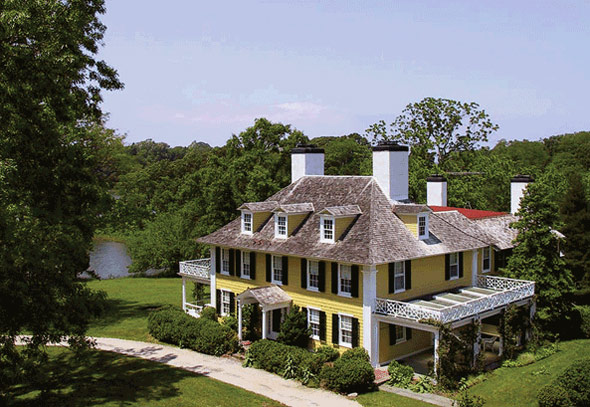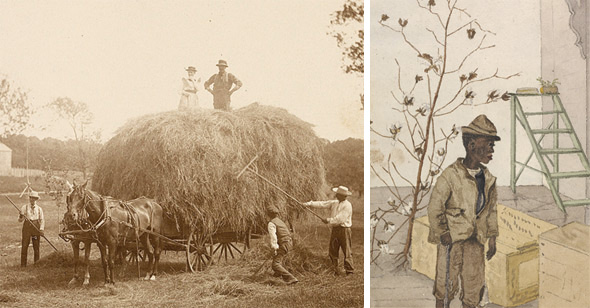history
Matters of the Manor
by Naomi Howell / GAL ’14
In this still-young country, it’s hard to imagine grand estates riding out the ages Downton Abbey-style in the care of a single family. And yet the Sylvester Manor on Shelter Island, nestled in between Long Island’s two forks, has been passed down through 15 generations of Sylvesters. Among the house’s historic treasures are 60 linear feet of letters, journals, maps, photographs, and artifacts, offering a range of insight into early American culture—from the little-acknowledged practice of slavery in New York to the industrialization of agriculture. Now organized and protected within NYU’s Fales Library & Special Collections, the new Sylvester Manor Archive has inaugurated its opening with an exhibition at Bobst Library.
The manor was initially a point on the infamous triangle of trade, whose coordinates were in West Africa, the American colonies, and the Caribbean. In 1652, Nathaniel Sylvester bought Shelter Island to use for raising livestock to sell in the West Indies and harvesting trees for wooden barrels to be shipped to the islands and filled with rum. The estate ran on the labor of African slaves, Native Americans impressed into service, and indentured European servants. Some of the archive’s earliest documents are bills of sale from the Boston slave market.
By 1859, when the property passed to Eben Norton Horsford, a wealthy Boston chemist and the inventor of baking powder, the manor was used as a vacation home, welcoming the likes of Henry Wadsworth Longfellow and Sarah Orne Jewett, whose handwritten poetry resides in the archive. Today, the most recent Sylvester relation has opened the estate to the public as an organic farm and food education center.

The "Sylvester Manor: Food and Power on a Northern Plantation" exhibition closes August 31.







